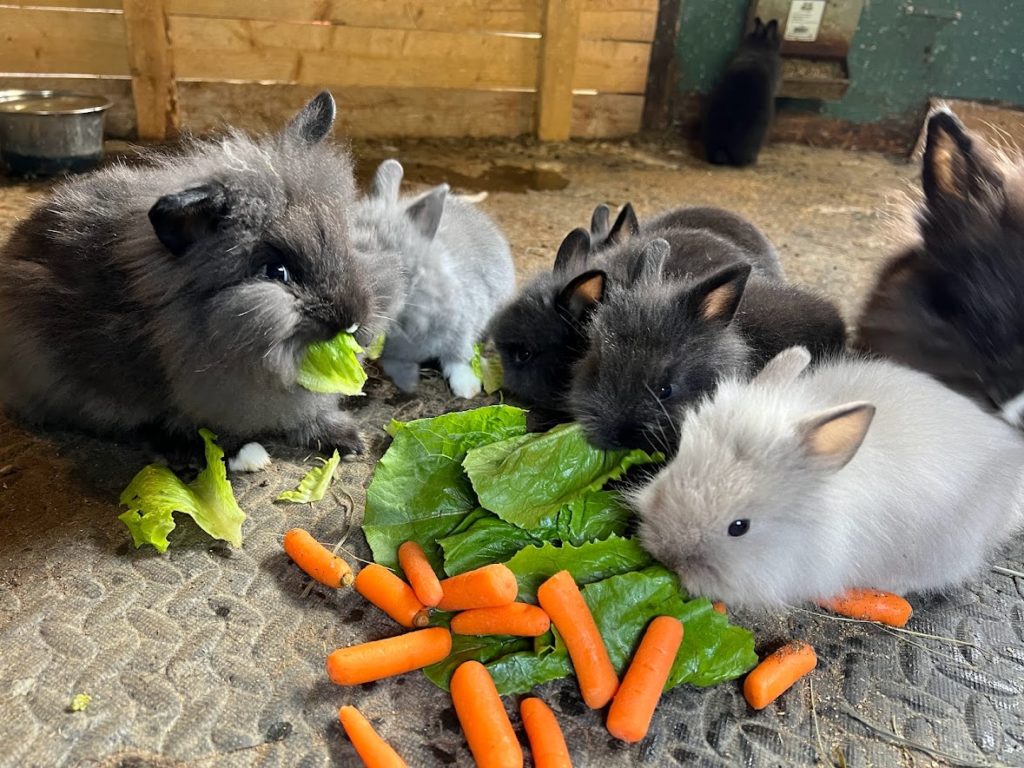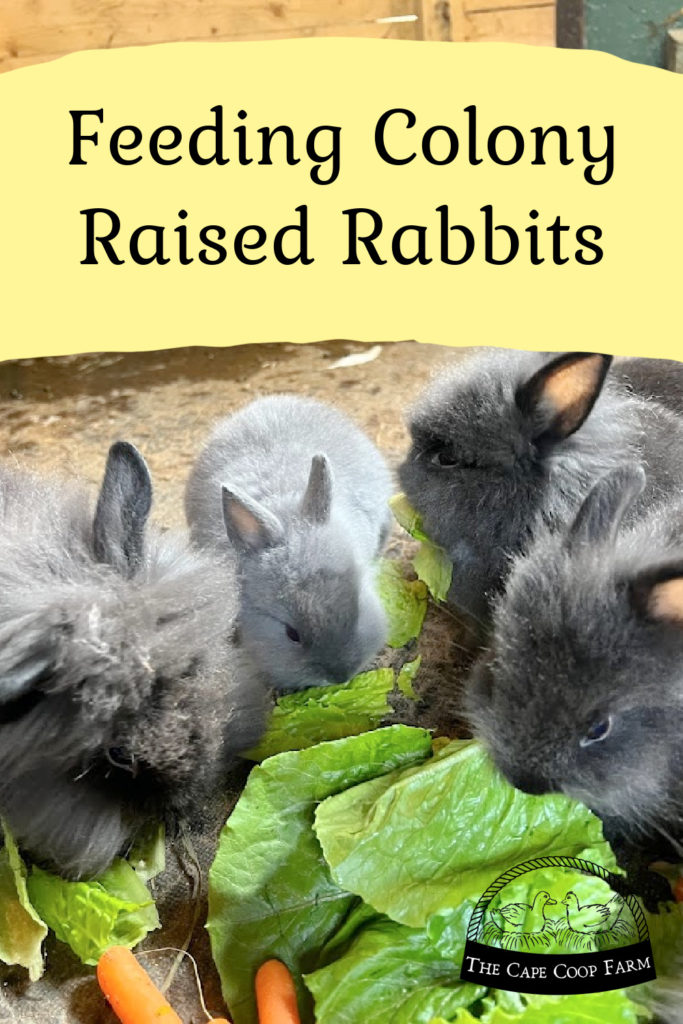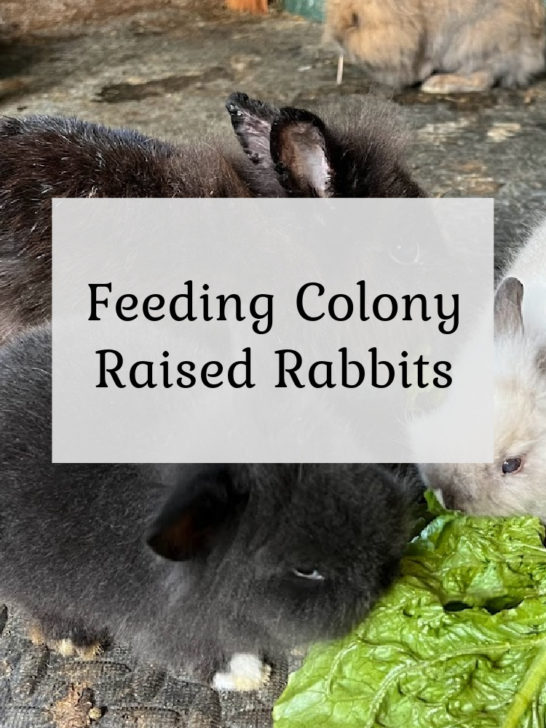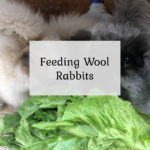---------------------------------------------------------
Raising rabbits in a colony setting allows them to live a more natural life. They can move about and interact with other rabbits instead of living in separate cages. But it can come with challenges.
For many generations people raising rabbits would keep each rabbit in its own cage, only bringing them together briefly for breeding. Raising rabbits in this manner is certainly easier for human caretakers. Fighting is eliminated and it is really easy to control feed, water, and health management. You know right away when one rabbit hasn’t touched their food. If a rabbit is getting overweight you can cut back pellets for just that rabbit. It is obvious when an individual rabbit isn’t pooping enough or has malformed poops. click here to read more about rabbit poop
Rabbits are social animals, however. In the wild, they live in colonies with anywhere up to a few dozen rabbits. Given the choice and the proper set up, I really believe they are much happier living a colony life. It can make rabbit management more difficult for humans.
Tips for monitoring colony health
You need to be more interactive with your rabbits so you can pick up on subtle cues that they might not be feeling well. The more time you spend with them, the more you will know their personalities, making it easier to spot when someone is sick.
When you find non-normal droppings you need to use some problem-solving skills to figure out who it is. Droppings can be an early warning system for digestive issues. When colony raising, it is really helpful to have some dog crates or wire pens available for separating rabbits for observation.
You should spend time with the colony at feeding time, making sure everyone is getting access to the feed & water. It is a good idea to handle the rabbits often as well. It can be hard to tell if they are underfed underneath all that fluff! Weighing & logging the weight of each rabbit on a monthly basis is a great way to track a large colony.
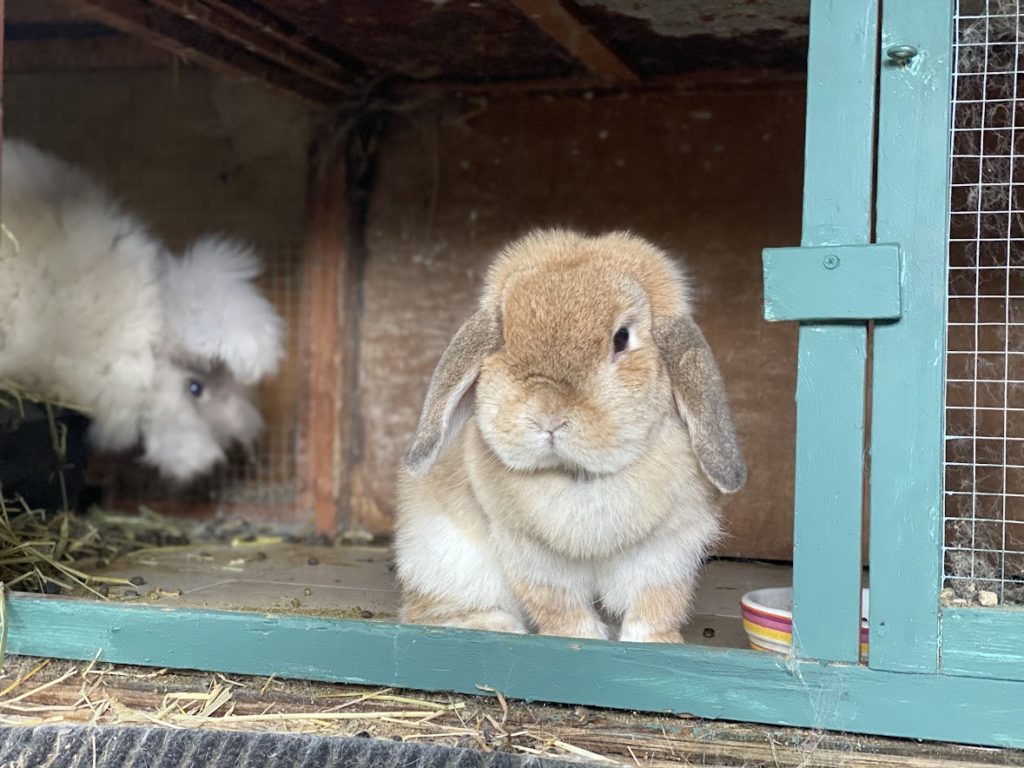
Feeding Colony Rabbits
Feeding a large group of rabbits can be tricky. An average size rabbit (6-10 pounds) should get about 1/4 cup of commercial rabbit pellets each day. In individual cages, it’s easy to just give each bunny their daily portion to maintain a healthy weight. Given the choice, rabbits will happily chow down on pellets all day ignoring their hay & vegetables so it’s not recommended to have free choice pellets.
Colony pellet solutions
But what if you have 10 rabbits living together? The group will need 2.5 – 3 cups of pellets per day. How can you keep one rabbit from eating all of it? Honestly, you just can’t control the feed as well as you can in cages. The good news though is that colony rabbits have a lot more room for running and jumping so they get a lot more exercise than cage bunnies. This helps them burn off some of those extra pellet calories.
If you have one rabbit that is a big food bully, eating it all himself and keeping the others from the food, you might need to separate him at feeding time. For most colonies, spacing the feed out is a sufficient solution.
Multiple feeders
You should always have multiple feeders in your colony. This allows the more timid bunnies to still have access to feed. How many feeders you need depends on the personality of your colony. If they are super harmonious and great at sharing you might be good with a 1 feeder per 6-7 rabbit ratio. If they get grouchy at feeding time you will need more feeders. Watch your rabbits at feeding time. Everyone should be able to eat at the same time without fighting.
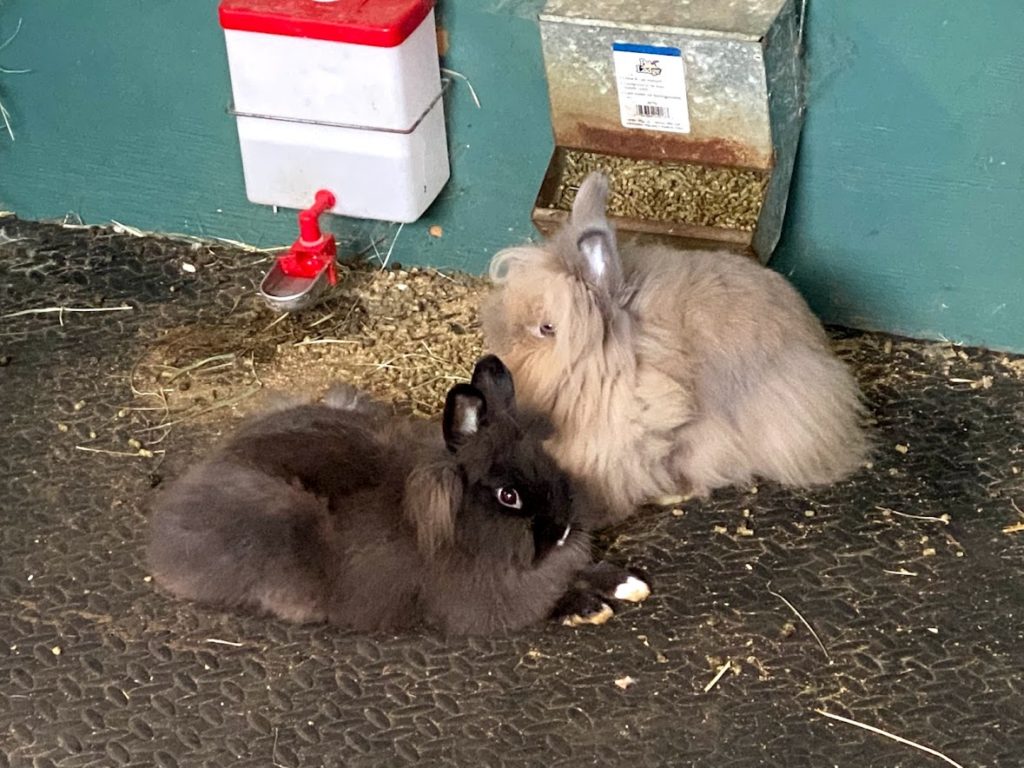
Multiple feed times
If you have a smaller colony of just 3-4 rabbits you can probably just feed them once a day. If you have a larger colony you might want to consider feeding them twice a day. Instead of feeding ten rabbits 3 cups of pellets in the morning, try feeding them 1.5 cups in the morning and 1.5 cups at night. This helps prevent one rabbit from inhaling 2 cups of pellets in one sitting.
Water
Fresh, clean water should always be available in unlimited amounts. Just like with the pellets, it is a good idea to have multiple water bowls to prevent fighting and crowding.
Hay
Hay should make up most of a rabbit’s diet to ensure their digestive tract has plenty of fiber. An upset digestive system can go downhill quickly for a rabbit and be deadly. This is particularly true for fluffy rabbits like Angoras or Lionheads. click here to read about GI stasis in rabbits Hay should always be unlimited and refreshed often to keep it smelling appealing.
Fresh greens
In addition to pellets & hay, rabbits should also be offered fresh greens daily. A natural diet helps balance their gut health and adds additional fiber & nutrients. Some popular choices for daily greens are romaine lettuce or other dark leafy greens, clover, carrot greens, collard greens, or herbs. Aim for about 1/2 cup per rabbit. click here to read about which foods are good for rabbits. Just like with the pellets, you might want to put the fresh greens in a few places around the enclosure to limit fighting.
